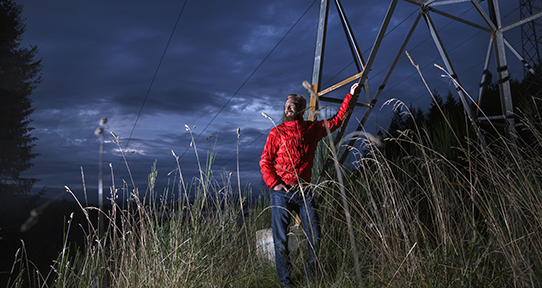The climate change reality

We need to prepare for the climate change we can’t avoid. Now.
by Jody Paterson
This summer’s record high temperatures, intense wildfires and smoky skies are stark reminders of the types of impacts that will be seen more frequently with climate change.
The Pacific Institute for Climate Solutions (PICS), led and hosted by the University of Victoria, was established in 2008 with a $94.5-million endowment from the BC Environment Ministry. The province has legislated an 80 per cent reduction in carbon emissions by 2050, and PICS is the innovative collaborative of BC’s four research universities formed to help achieve that.
“It’s going to take absolutely everyone to get us there,” says PICS executive director Sybil Seitzinger. “We not only need to work to decrease our emissions, we also need to prepare for the climate change we can’t avoid.”
Taking action around climate change must be multi-faceted. Energy sources for transport and indoor heating need to change to reduce carbon emissions from fossil fuels. The province’s transport, heating and industry sectors still run largely on fossil fuels and make up roughly 80 per cent of BC’s greenhouse gas emissions, notes Seitzinger.
Buildings and houses may need to be constructed or retrofitted to withstand hotter summers and wetter winters caused by climate change. Food imports need to be examined with an eye toward changing growing conditions in key regions such as California.
And while BC has abundant, clean and cheap hydro-electric energy reserves, our neighbouring provinces aren’t so fortunate. Alberta, for example, relies heavily on fossil fuels.
In 2014, PICS began a five-year UVic research project to specifically address that anomaly. The 2060 Integrated Energy Pathways Project is taking a “technology-neutral” look at a suite of possibilities for bringing on new forms of clean, renewable energy that can be integrated into BC’s existing electricity grid to help other provinces and eventually western North America.
“We need integrated energy systems—integration between electric, gas, wind, solar and others,” says mechanical engineer Andrew Rowe, director of UVic’s Institute for Integrated Energy Systems (IESVic) and the 2060 project lead. “We’re talking new things. The future is not the past.”
IESVic works with private and public sector partners around the world to investigate sustainable energy systems that encompass everything from the harnessing and storage of energy to the delivery of services to communities and industry.
Whatever energy choices are ultimately settled on for BC, everything comes at a price, notes UVic mechanical engineer Peter Wild, former 2060 project director.
Alternatives such as wind and solar energy—or the “run of river” hydro projects that have enthused previous BC governments—may sound appealingly low-impact compared to the massive Site C dam proposal. But any renewable energy project at a provincial level requires road-building, environmental impact and the installation of large infrastructure, says Wild.
A key role of the 2060 project is to increase public understanding of that. A PICS graduate student created the board game Megawatts and Marbles to help people grasp that “there’s no free lunch” when it comes to building an energy system, says Wild.
“On the positive side, we have an incredibly good system in BC,” he says. “It’s clean, it’s cheap. We’ve become really used to that. But costs are probably going to have to go up to reach BC’s goal.”
View as PDF (357 KB).
PICS, located on the UVic campus, is an independent knowledge network that develops and promotes climate change mitigation and adaptation solutions, including multidisciplinary team research initiatives such as the 2060 project.
PICS uses a unique model for its multidisciplinary research that brings together engineers, economists, behavioural psychologists and more to look at climate change strategies from all perspectives. It strives to inform and engage policy-makers, industry, educators and the public about climate change issues and solutions.
Founded at UVic in 1989, IESVic is an international leader in research on sustainable energy solutions, including fuel cells, energy efficiency, alternative energy sources, and large-scale analysis of how policy and technology can work together.
The 2060 project has garnered international attention for a unique approach based on resources and opportunities rather than political boundaries in determining the optimal greater good for Canada. Mechanical engineering students participating in PICS-funded research at IESVic are in high demand throughout Canada’s energy industry, working with BC Hydro, government, PowerEx and other key industry stakeholders.
NeuroTracker software was intended for elite athletes, but a group of bridge-playing Greater Victoria seniors who did seven weekly sessions as part of an ongoing UVic research study reported a noticeable improvement in their bridge games and performed better on a cognitive task.
Find out more about UVic's leadership in clean growth, climate and energy research.
